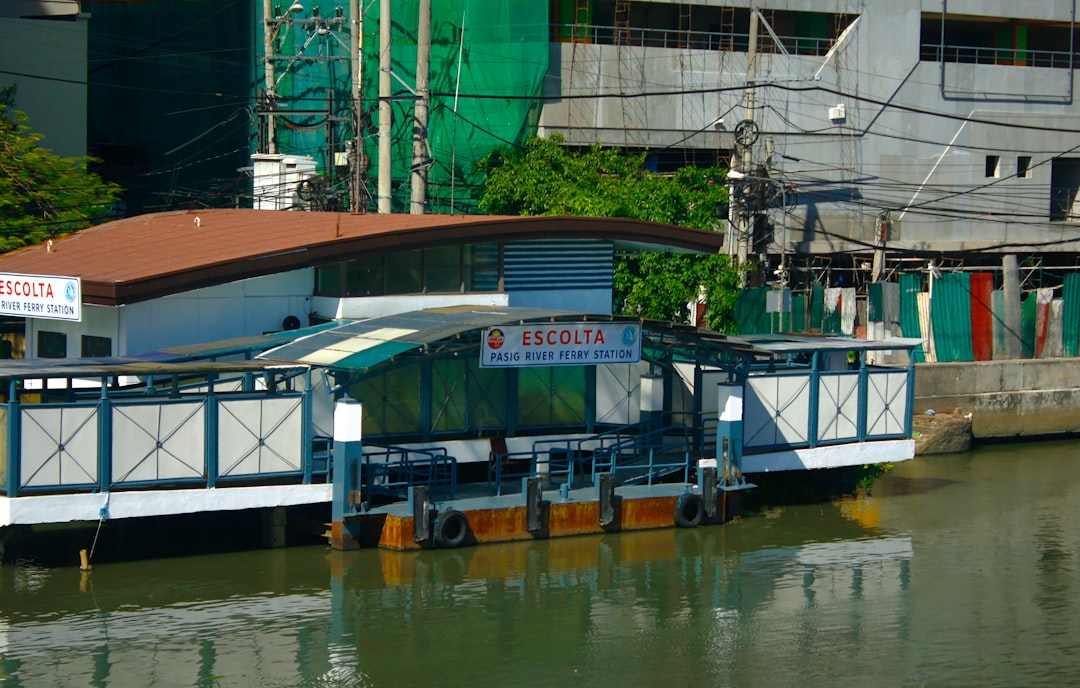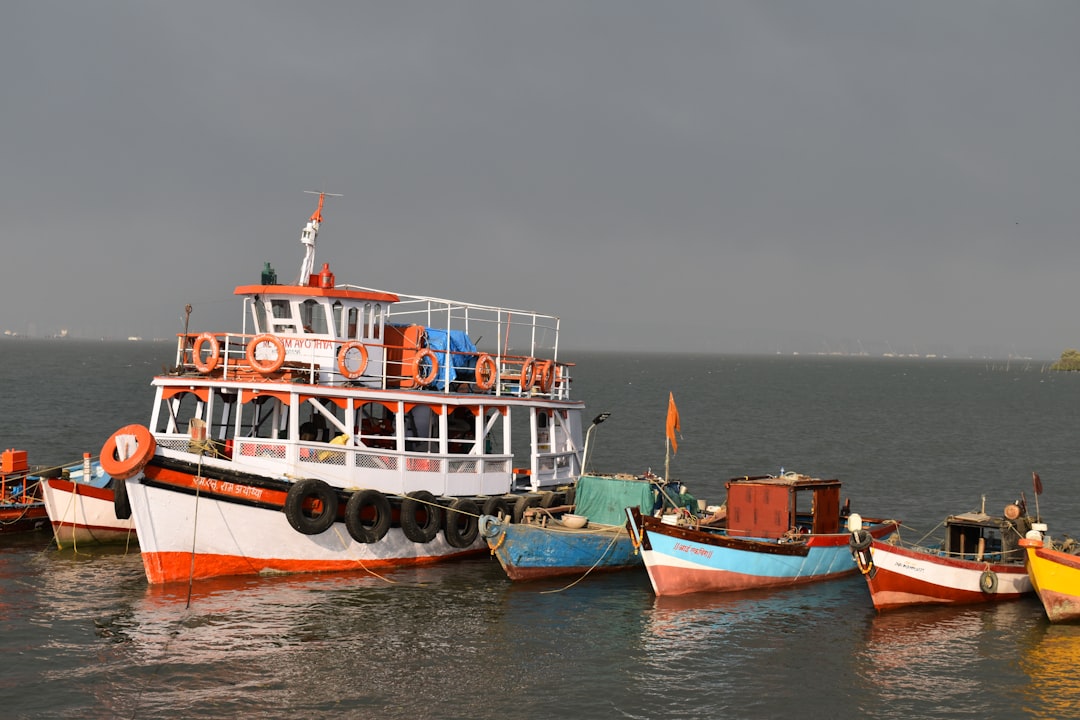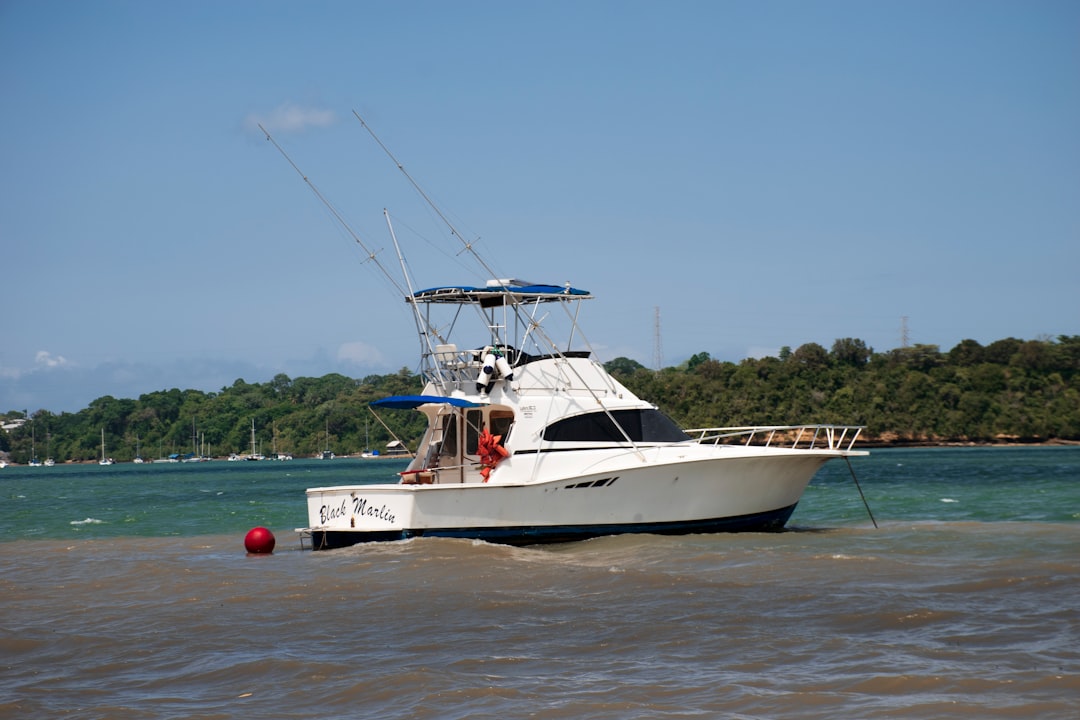

Engage prospects with a scan and streamline customer engagement with FREE QR code marketing tools by Sona – no strings attached!
Create a Free QR CodeFree consultation

No commitment

Engage prospects with a scan and streamline customer engagement with FREE QR code marketing tools by Sona – no strings attached!
Create a Free QR CodeFree consultation

No commitment
Boat transportation services are navigating a complex mix of operational challenges, rising customer expectations, and a rapidly digitizing landscape. From water taxis and commuter ferries to private charters and luxury fleets, operators are under pressure to grow revenue while improving safety and streamlining guest experiences. Yet a large portion of demand appears offline at docks, marinas, and on boats, which creates blind spots for attribution and makes it difficult to identify high-intent prospects. When paper processes and static signage cannot capture data or trigger next steps, qualified demand slips through the cracks.
QR codes are changing that equation. By turning any physical touchpoint into a digital entry point, operators can move guests from interest to action in seconds, while capturing the data needed to personalize experiences and measure results. QR codes consolidate manual tasks like ticketing, waivers, schedule updates, and feedback collection into fast, touchless workflows that are easy to deploy and update. They also provide analytics that reveal who is engaging, where they are scanning, and which offers or routes resonate.
This guide shows how to use QR codes to drive conversions, deepen engagement, and build an end-to-end measurement system that links each scan to bookings, upsells, and loyalty. You will learn practical use cases, high-impact placements, and a repeatable execution framework, along with tips for segmentation, attribution, and multichannel integration. The goal is to help you transform every dock, deck, and sign into a profitable, data-rich moment.

QR codes bridge the gap between physical touchpoints and digital outcomes, which makes them a natural fit for boat transportation services. Guests encounter your brand in real places, such as marina posters, dockside kiosks, vessel entry points, and printed brochures. With a single scan, you can take them to booking flows, live route updates, or tailored offers, while capturing source, time, and device data that reveals intent and informs your next move.
Start by identifying the conversion moments that matter most. For commuter ferry operators, it may be faster check-ins and reliable schedule alerts. For tour boats and boat rentals, it may be converting walk-by interest into reservations and turning onboard attention into upsell revenue. Replace analog, low-signal processes with QR-driven flows that are simple for guests and measurable for your team. Paper forms, printed schedules, and manual sign-up sheets are common friction points that QR codes eliminate in favor of touchless experiences and real-time analytics.
This guide is designed for growth marketers, operations leaders, and owners who want to modernize guest experiences, drive measurable conversions, and replace outdated workflows with a scalable, data-driven approach. If you are moving from paper to digital, QR codes deliver both efficiency and visibility, which strengthens every step of your customer journey. Sona QR supports the full lifecycle of this transformation, from creation and design to tracking, optimization, and attribution.

Boat transportation involves high volumes of real-world interaction. Riders see signs at marinas, notice decals on boat doors, and receive paper receipts from crew or vendors. Without a fast path to action, those moments fade. QR codes close this gap by translating offline interest into trackable online behavior that leads to bookings, feedback, or upsells. They also eliminate the lag and waste associated with reprinting materials when schedules or offers change.
Adoption is rising because QR codes bring speed, flexibility, and measurability to an environment where conditions can change quickly. If weather forces a schedule update, dynamic QR codes linked to a single destination allow teams to publish new details instantly. If your marketing team needs to understand which posters or mailers are driving bookings, campaign-level QR codes produce clean attribution. For operators trying to personalize service, scan data reveals which routes, times, or offers pull in different audience segments.
For boat transportation services, the practical impact shows up on appointment cards at marinas, safety placards on deck, kiosk displays near ticket counters, decals on gangways, and promotional flyers in hotels or airports. Each placement becomes a measurable onramp to your digital funnel that not only serves customers in the moment, but also creates richer data for operations and marketing.

The right QR format aligns the scan experience with the action you want a rider to take. Boat operators typically rely on a mix of booking links, digital forms, and support requests, with dynamic QR codes providing the flexibility to adapt content as situations change. Selecting the best format for each use case ensures guests arrive at the most relevant destination with minimal friction.
While almost any QR code can link to a web page, you can accelerate results by using specialized formats for frequent tasks. For instance, a vCard helps charter sales teams stay top of mind for high-value prospects, while Wi-Fi QR codes make it painless for riders to get online and receive service updates. These choices save time, create a better user experience, and increase scan-to-action conversion rates.
Dynamic QR codes are especially valuable in this vertical. They allow you to change destinations after printing, run A/B tests, and append UTM parameters for clean attribution. Sona QR consolidates creation and management in one place, so marketing teams can update links in seconds, route scans to different landing pages based on context, and access analytics that inform operational and promotional decisions.

Conversion opportunities exist wherever your offline audience interacts with your brand. The key is to deploy QR codes at those moments with clear calls to action that match intent. For example, guests waiting to board are primed for schedule alerts, upgrades, and snack orders, while passersby near a marina may be more interested in a quick quote or a first-ride discount.
Think in terms of journey stages and physical context. Awareness placements introduce your services and capture interest, consideration placements answer questions about routes and pricing, and conversion placements streamline payment and check-in. Post-ride placements close the loop by prompting reviews, referrals, and rebookings.
Each placement enhances segmentation and remarketing by telling you who engages, where, and why. Over time, you will discover which docks produce weekend tourists, which routes attract regular commuters, and which promotions convert best in specific weather or event contexts. That knowledge turns QR codes from a convenience feature into a systematic growth engine.

QR codes succeed when they match a real-world need with a clear, high-value action. The most effective use cases eliminate friction for riders, reduce operational drag for crews, and produce measurable signals for marketing and operations. Start with a few high-visibility wins, then expand to more specialized scenarios as your team and guests build scanning habits.
When you design each use case, specify the destination, desired outcome, and analytics schema upfront. Your landing page should be mobile optimized, load quickly, and include a single primary action. Add UTM parameters to the URL so every scan contributes to a clean attribution model and helps you refine messaging, placement, and timing.
These use cases create momentum across the guest lifecycle. Guests learn to scan for the things they care about, crews benefit from faster, standardized processes, and leaders gain visibility into what drives conversion and satisfaction. Sona QR helps teams manage the full portfolio of codes and destinations, including dynamic updates and analytics, so each use case can evolve as your operations and audience change.
Every scan is a data point that reveals intent, context, and timing. When you deploy distinct QR codes across touchpoints, you can segment audiences automatically and personalize follow-up messages. The more deliberate you are about mapping scans to journey stages, the more precise your retargeting will become.
Boat transportation services often serve multiple audience types at once: weekday commuters, weekend tourists, corporate event planners, and private charter prospects. Distinguishing these segments at the scan level lets you tailor communication frequency, offers, and creative. For instance, commuters might value time savings and subscription discounts, while tourists may respond to bundles that combine sightseeing routes with local attractions.
In practice, this approach lets you build lists such as commuters vs. tourists, first-time riders vs. repeat riders, and walk-up customers vs. advance bookers. Over time, you can enrich these segments with scan frequency, route affinity, and average order value, then feed those insights into bidding strategies, creative, and loyalty programs.
QR codes act as connectors across offline and digital channels, which makes them especially valuable when your audience moves between docks, boats, websites, and social platforms. By adding scanable entry points across your marketing mix, you increase real-time engagement while building a unified data layer that captures intent from media that used to be unmeasurable.
A connected funnel for boat transportation might start with a marina poster, continue with a mobile booking flow, and end with an onboard upsell. Each scan feeds a single analytics system that shows which channels and placements contribute to conversion. With Sona QR, you can manage codes across print, digital, and events, then sync the data to your CRM and ad platforms for closed-loop attribution.
This multichannel approach is not only about convenience. It is about creating a cohesive journey and tying every touchpoint back to performance. When scans feed one system, teams can see where demand starts, how it progresses, and which messages close the loop.
Launching a QR campaign is straightforward when you break it into clear steps. Decide what outcome you want, choose the right code type and destination, design for scannability, deploy in strategic locations, and measure relentlessly. The following checklist adapts to both small pilots and full fleet rollouts.
Start with one or two high-impact use cases such as contactless boarding or dockside booking, then expand to onboard upsells, feedback collection, and private charter lead capture. As you scale, maintain a central inventory of codes in Sona QR, with standardized naming conventions, UTM parameters, and segment tags to keep your data clean and useful.
Clarify the primary business goal. Are you trying to reduce check-in times, increase bookings from hotel lobbies, capture charter leads, or lift onboard revenue per rider. Select one outcome per code and design everything around it, including the landing page, CTA, and follow-up workflow. For example, a water taxi operator at a busy marina might deploy a code that drives to a one-tap booking flow for the next available departure.
Map your use case to a specific audience and moment. Commuters need speed and reliability, tourists need clarity and inspiration, and charter prospects need consultation. Translate these needs into a scan experience that feels natural in context. If the use case is safety compliance, link the code to a short, multilingual video and an acknowledgment form that is easy to complete on a phone.
Decide between static and dynamic codes. Static codes point to a fixed destination and work for evergreen content such as a general route overview. Dynamic codes can be edited after printing, include analytics, and support campaign-level tracking, which is ideal for schedules, promotions, and any placement where you expect to iterate.
Match the format to the task. Web links are the default choice for bookings and updates, vCards help sales teams nurture charter leads, and SMS or email pre-fill accelerates support triage. Wi-Fi codes make it effortless for riders to connect and receive live announcements. Sona QR supports all formats in a single dashboard, which makes it easy to test and change as you learn.
Design for visibility and clarity. Ensure sufficient contrast, sufficient white space, and a minimum size appropriate for the viewing distance. Place a clear, benefit-driven CTA next to the code such as Scan to book your next ride or Scan for live route updates. Add your logo or brand frame to build trust without compromising scannability.
Test in real conditions. Scan from multiple angles and distances on different devices. Check performance in bright sunlight on the dock and lower light on the boat. A small adjustment to size or placement can dramatically improve scan rates. Before large print runs, pilot your design on a few boats or docks and collect early analytics to validate performance.
Roll out codes where they will have the most immediate impact. High-traffic docks, ticket counters, fleet doors, seatbacks, and partner hotel desks are top candidates. Match each placement to the action you want. For example, dock signs should emphasize booking and live status, while seatbacks should emphasize upgrades, snacks, and route-specific content.
Coordinate with partners and staff. Provide talking points so crew can prompt guests with a clear value statement. Share a quick guide with partners such as hotels and tour desks so they know what the code does and how guests benefit. Consistent messaging across physical locations accelerates adoption.
Monitor performance with a focus on both scan rates and downstream conversions. A code with moderate scans but high booking conversion may outperform a highly scanned code that fails to convert. In Sona QR, track scans by location, time, and device, then connect those scans to bookings, reviews, and upsells using Sona attribution.
Iterate on placement, creative, and landing pages. A/B test CTA language, offer framing, and page layouts. Adjust deployments by daypart and season. Use insights to expand what works and retire what does not. Build a feedback loop with crews to capture qualitative insights, such as questions riders ask before scanning and obstacles they encounter.
A disciplined approach to execution ensures that each scan contributes to measurable outcomes. Over time, you will build a library of best practices that raise the baseline for every future campaign, from seasonal promotions to new route launches.
Operators often struggle to understand which offline efforts drive real results. A poster may look good and a brochure may reach many hands, but without a way to link engagement to outcomes, it is hard to justify spend or optimize plans. QR codes provide the missing connective tissue when paired with robust tracking and attribution.
The goal is not just to count scans. It is to build a complete picture from the first scan through to booking, upsell, and loyalty. See first-touch vs last-touch attribution models. That requires a platform that captures context such as time and location, enriches contacts in your CRM, and resolves anonymous scans to known buyers when possible. With Sona QR and Sona, you can unify touchpoints across stages of the customer journey and attribute revenue to the right channels and placements.
When you connect scans to revenue, QR codes become part of your performance marketing stack rather than a novelty. You gain the confidence to scale winning placements and shift away from assets that do not move the needle, which improves ROI and strengthens collaboration between operations and marketing.
Scaling QR impact requires a mix of technical rigor and frontline enablement. The most successful programs pair clean data collection with consistent in-person prompts and clear, benefit-oriented CTAs. When staff know what the code does and why it matters, adoption rises and your analytics become more representative of true demand.
Focus on tips that align with the media you use most, the journeys you want to enable, and the systems you already have in place. If your team leans heavily on brochures and dock signage, invest in creative and placement testing. If onboard upsell is a priority, train crews on the right moment and language to prompt a scan.
Creative deployment examples can spark new ideas. One operator placed QR codes on lifejackets and safety stations that open multilingual safety videos and route-specific tips, which improved compliance and engagement with critical content. Another added QR codes to captain’s receipts that unlock a next-trip discount when a rider posts a review or shares a referral, which turned routine transactions into repeat business and a steady flow of UGC.
QR codes have matured into strategic assets for boat transportation services. They transform analog surfaces into digital entry points, streamline complex processes into tap-friendly flows, and convert anonymous foot traffic into measurable signals. Most importantly, they help teams connect the dots from first scan to booked ride, onboard spend, and loyalty, which is the foundation of sustainable growth.
By deploying QR codes thoughtfully across docks, fleets, and partner venues, operators build a connected customer experience that moves people from awareness to action quickly. With Sona QR and Sona.com, you can manage codes centrally, capture rich analytics, sync data to your CRM, and attribute revenue across the full journey. The result is a practical, scalable pathway to higher conversion, stronger segmentation, and better decisions.
Now is the time to review your workflows, identify high-impact placements, and launch targeted pilots. Start with booking and check-in, expand to onboard upsell and feedback, and layer in audience segmentation and attribution as you go. Each scan is an opportunity to improve service and grow revenue, and with modern tools, you can turn those opportunities into a measurable advantage across your entire operation. Start creating QR codes for free. Or book a demo to see how attribution and identity resolution power closed-loop reporting.
QR codes have revolutionized boat transportation services by transforming traditional interactions into dynamic, measurable opportunities for growth. Whether it’s streamlining booking processes, enhancing passenger experiences, or providing real-time tracking information, QR codes replace cumbersome manual steps with instant, mobile-friendly actions—turning every scan into a meaningful engagement that drives conversions and customer loyalty.
Imagine effortlessly capturing data on which routes or promotions attract the most interest, and instantly updating your campaigns without reprinting materials. With Sona QR, you can create dynamic, trackable QR codes in seconds, connect every scan to revenue, and optimize your marketing efforts for maximum impact. No more missed leads or wasted resources—just smarter, more profitable boat transportation campaigns.
Start for free with Sona QR today and turn every passenger interaction into a seamless journey toward increased bookings and lasting customer relationships.
QR codes convert physical touchpoints into digital entry points that enable fast bookings, check-ins, updates, and feedback collection, reducing manual tasks and improving operational efficiency.
QR codes speed up reservations, digitize static materials, simplify check-in and waivers, enable onboard upsells, and provide real-time analytics for better decision making.
They offer touchless, quick access to booking flows, live route updates, safety information, onboard services, and easy feedback submission, enhancing convenience and engagement.
Use unique codes for each placement, append UTM parameters for attribution, design for visibility with clear CTAs, test in real conditions, deploy across high-impact channels, and train staff to encourage scanning.
QR codes provide instant access to multilingual safety videos and compliance information, digitize boarding passes and waivers for faster check-in, and allow real-time updates without reprinting materials.
Common formats include web links for bookings and updates, vCards for sales contacts, SMS or email pre-fill for support requests, Wi-Fi access codes for onboard connectivity, and app download links.
Effective placements include ticket counters, dock signage, boat decks and lounges, printed brochures, out-of-home ads, fleet and dock decals, and partner hotel or marina locations.
By using distinct QR codes for different journey stages and tagging scan data by intent, location, and time, operators can segment audiences and sync data with CRM and ad platforms for personalized follow-up.
QR codes connect offline materials like brochures, print ads, and signage with digital channels such as booking sites and social media, creating a unified data layer that tracks customer engagement across touchpoints.
Define the business goal and audience, select the appropriate QR code type, design and test the code for visibility, deploy codes in strategic locations, and continuously track and optimize performance.
Tracking captures detailed scan data including time, location, and device, enabling attribution of bookings and revenue to specific campaigns and placements, which supports data-driven optimization and ROI measurement.
Use unique codes per placement, maintain clean UTM tagging, automate immediate follow-ups, enable staff with clear CTAs, and pilot test designs to improve scan rates and data quality.
Dynamic QR codes allow content updates after printing, support campaign tracking, enable A/B testing, and provide flexibility to adapt messaging quickly to changing conditions like schedule updates.
They link to multilingual safety videos and emergency procedures accessible on guests' devices, ensuring consistent, verified delivery of critical safety information.
QR codes reduce manual paperwork, speed boarding and check-in, streamline guest interactions, and provide real-time data that improves scheduling and resource allocation.
Use Sona QR's trackable codes to improve customer acquisition and engagement today.
Create Your FREE Trackable QR Code in SecondsJoin results-focused teams combining Sona Platform automation with advanced Google Ads strategies to scale lead generation

Connect your existing CRM

Free Account Enrichment

No setup fees
No commitment required

Free consultation

Get a custom Google Ads roadmap for your business






Launch campaigns that generate qualified leads in 30 days or less.
